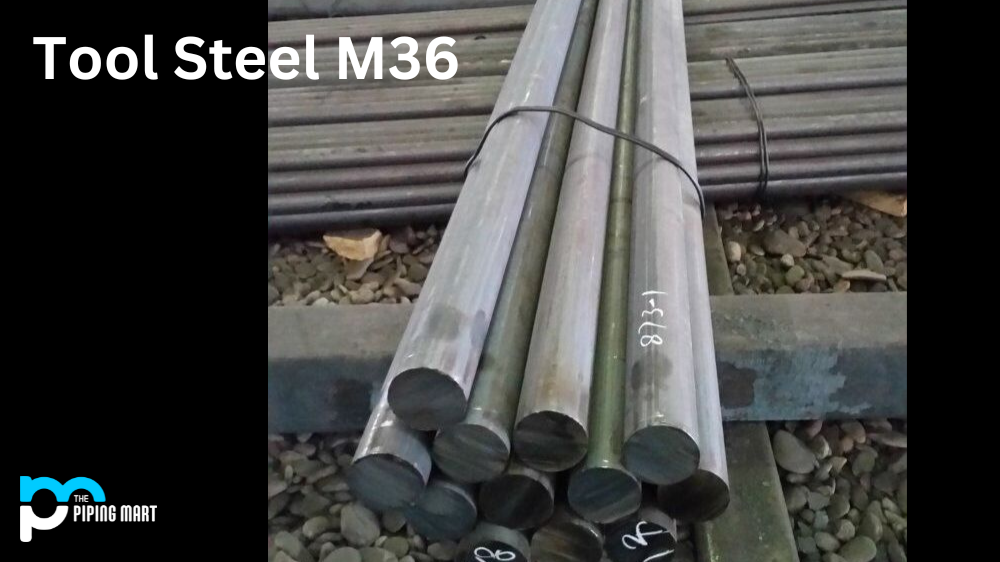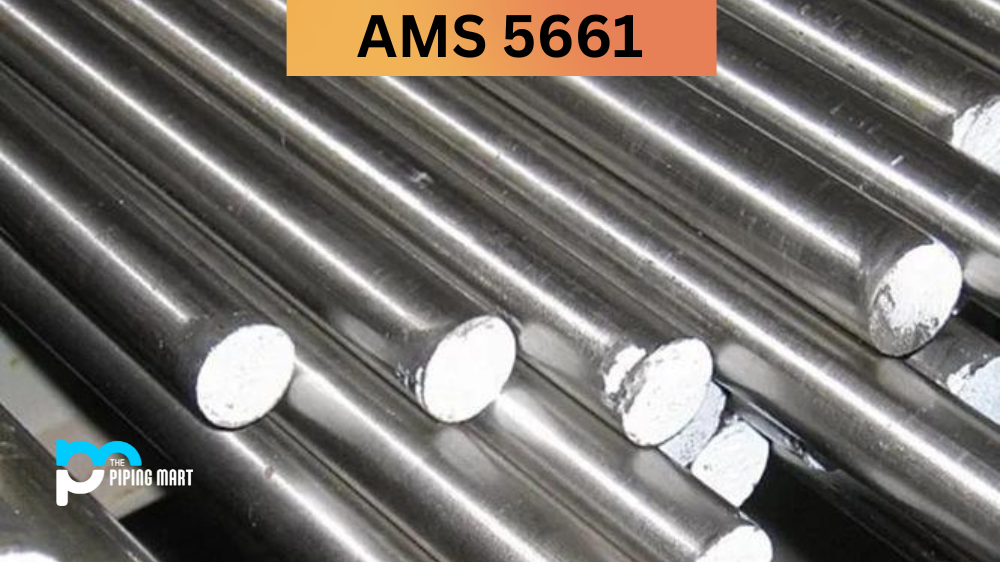AISI M36 is a high-speed steel that has been formulated to provide exceptional wear and abrasion resistance. It is often used in applications where strength and toughness are paramount, such as in manufacturing cutting tools. This guide will break down the material’s composition and chemical properties, mechanical properties, physical properties, heat treatment methods and resistances, machining techniques, and welding capabilities.
M36 Tool Steel Composition
M36 Molybdenum High Speed Tool Steel contains chromium (5%), molybdenum (4%), vanadium (4%), tungsten (5%), cobalt (3%), along with other elements like carbon (.9%), manganese (.35%), silicon (.35%) and sulfur (.04%). This combination makes it one of the best alloys for use in tooling applications.
| Element | Content |
|---|---|
| C | 0.80-0.90% |
| Mn | 0.15-0.40% |
| Si | 0.20-0.45% |
| Cr | 3.75-4.50% |
| Ni | 0.30% |
| Mo | 4.50-5.50% |
| W | 5.50-6.50% |
| V | 1.75-2.25% |
| Co | 7.75-8.75% |
| Cu | 0.25% |
| P | 0.03% |
| S | 0.03% |
M36 Tool Steel Mechanical Properties
Due to its composition, AISI M36 offers excellent tensile strength up to 2200 MPa while maintaining a good level of impact strength at lower temperatures. At room temperature, it exhibits an ultimate tensile strength of 1750 MPa combined with an elongation rate of 20%. These features make it well-suited for heavy-duty applications requiring resistance to shock loading.
| Mechanical properties | Metric | Imperial |
|---|---|---|
| Poisson’s ratio | 0.27-0.30 | 0.27-0.30 |
| Elastic modulus | 190-210 GPa | 27557-30457 ksi |
M36 Tool Steel Physical Properties
The physical properties of SAE M36 are also impressive. It has a density of 7.85 g/cm³, slightly higher than most steels but still low enough to make it suitable for machining and forming operations. Its melting point range is between 1390°C and 1410°C, making it easy to weld without the risk of warping or distortion from overheating. Its thermal conductivity is 28 W/mK which falls within the middle range for metals; this means that heat will be transferred relatively quickly through the material when heated but not so quickly that it can’t be easily worked with traditional fabrication techniques like forging or machining.
| Physical properties | Metric | Imperial |
|---|---|---|
| Density | 8.18 ×1000 kg/m3 | 511 lb/ft3 |
M36 Tool Steel Equivalent
- ASTM A600
- FED QQ-T-590
- UNS T11336
M36 Tool Steel Heat Treatment
Heat treatment plays an important role in optimizing the performance characteristics of tool steel m 36. It can be tempered at temperatures ranging from 298-871°C, depending on what properties you want your finished product to have. When quenched and tempered, the alloy has good dimensional stability; this allows it to maintain its integrity even after multiple heat treatments without suffering from deformation or cracking due to repeated cooling cycles.
M36 Tool Steel Corrosion Resistance
The alloy also offers good corrosion resistance; when exposed to atmospheres containing corrosive elements like chlorine gas or salt water spray, its surface won’t corrode or rust easily due to its high chromium content, which provides passive protection against oxidation processes that lead to corrosion over time.
M36 Tool Steel Uses
AISI M36 is a versatile and valuable alloy that is used across a variety of industries. It has been found to be particularly well-suited to applications where extreme hardness, wear resistance, and hot hardness are required. It is used in the manufacture of cutting tools, gauges, dies and punches; drills, taps and reamers; milling cutters; broaches; hobbing cutters; drawing dies and bending tools. This steel type has also been used for injection moulds; extrusion dies, as well as in aircraft construction components – making it perfectly suitable for both military-grade operations and typical industrial production requirements.
Machining
Generally speaking, AISI M36 can be machined using conventional methods such as turning, milling, drilling, tapping etc. However, due to its high hardness, special care should be taken when machining. Using coolant during the cutting process helps reduce friction caused by metal contact.
Welding
As for welding, tool steel m 36 can be welded using either oxyfuel gas welding, shielded metal arc welding ( SMAW ) or gas tungsten arc welding ( GTAW ). Preheating before welding should always be done as well as stress relieving afterwards will help ensure maximum strength post welds.
Conclusion
In conclusion, tool steel m 36 is an excellent choice for heavy duty applications requiring good wear resistance and toughness. Its chemical makeup gives it great mechanical characteristics such as high tensile strength as well as physical traits such as dimensional stability after heat treatment. Heating treatments can further optimize these characteristics while ensuring corrosion resistance at elevated temperatures. Machining requires special attention due to its hardness, but overall workability remains good. Finally, proper preheating before welding will ensure strong post-welds with minimal cracking risks. All in all, tool steel m 36 offers users a reliable material solution for their application needs.

Meet Bhavesh, a seasoned blogger with a wealth of knowledge and experience. From metal products manufacturing to retail, Bhavesh has a diverse background in various industries and is dedicated to sharing his insights and expertise with readers.



